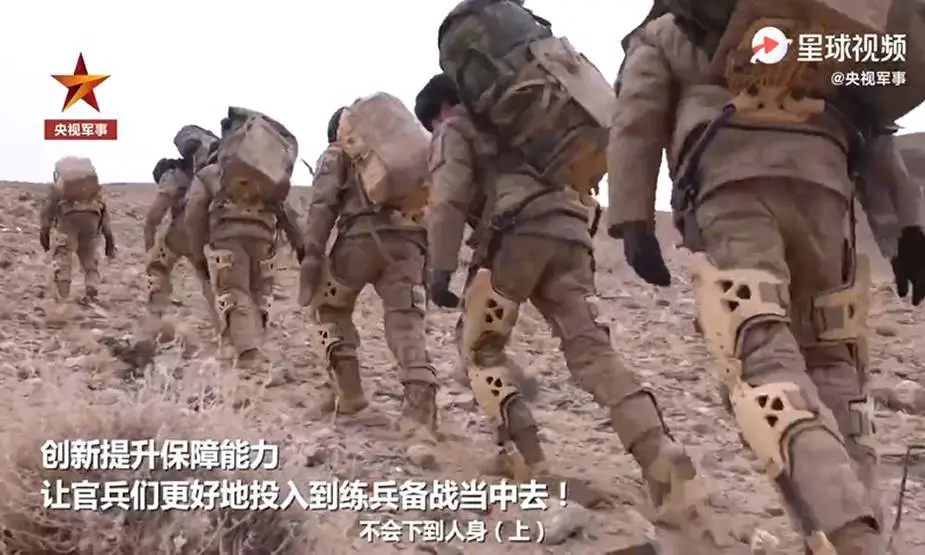Chinese People's Liberation Army (PLA) border defense troops in Ngari, Southwest China's Tibet Autonomous Region, recently received a type of exoskeleton suit that enables them to conduct tasks in harsh, high altitude environments more efficiently, state media reported, echoed by Chinese army's website China Military.
Follow Army Recognition on Google News at this link

PLA border defense troops wear exoskeleton suits in a supply delivery mission in Ngari, Southwest China's Tibet Autonomous Region in 2020 (Picture source: screenshot from China Central Television)
PLA border troops stationed in Ngari, which is more than 5,000 meters above sea level, have started using the exoskeleton suit, which allows them to carry supplies that weigh about as much as an adult, while avoiding the risk of waist or leg injuries, China Central Television (CCTV) reported on December 9. This kind of exoskeleton is particularly effective in missions such as supply delivery, patrol and sentry duty.
During a recent supply delivery mission, several soldiers attached to the PLA Xinjiang Military Command carried food and water, with each person carrying about 20 kg of these supplies in backpacks, according to the CCTV report. The weight of the backpacks was transferred to the frames of the exoskeletons.
The CCTV report did not give the designation or further technical details about the system. Judging from the footage in the report, the equipment is likely a lightweight, non-powered exoskeleton device. This kind of technical assistance is particularly helpful at high altitudes : due to the lack of oxygen, loads are felt much heavier than their actual weight, and human stamina also declines as the elevation rises. In border defense operations, the exoskeleton will give Chinese troops a significant physical advantage, when troops on the other side of the line do not use such equipment and suffer from fatigue.
The PLA had been previously testing exoskeleton suits, as it held a competition called "Super Warriors" in 2019, in which more than 50 types of exoskeleton prototypes made by 25 developers from all over the country competed in seven areas including lightweight mobilization, heavy-load marching, supply transport and munitions loading, the PLA Daily reported in November 2019.
All kinds of exoskeletons, whether powered or non-powered, rigid or flexible, and lower-body only or full-body, are emerging from laboratories.














